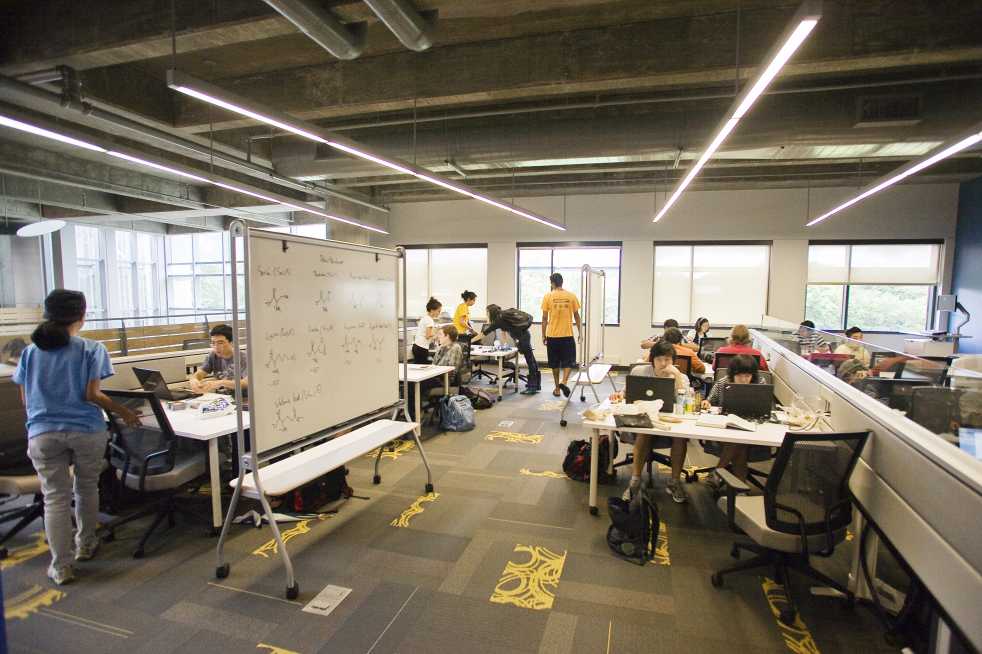Tech library researchers recently published a paper about the Clough Commons that analyzes the influence that the building has had on students’ academic productivity. Published in the Planning for Higher Education Journal by Ameet Doshi, Shilpi Kumar and Susan Whitmer, the research paper reveals that the building’s evident use of space does have a dynamic associated with the users’ academic learning.
“Because the Clough Commons is such a unique concept, there were no formal benchmarks to work from,” said Ameet Doshi, Head of User Experience at the Library. “Instead, we want to determine how the building is being used by students, where it has been particularly successful and where there are opportunities for further improvement.”
It has been 14 years since the idea of Clough Commons was first conceived by administrators and planners. In order to assess student activity in Clough Commons, the researchers have been executing first-hand interviews and discussions. The paper identifies 11 different modes of behaviors seen in the building and goes in depth on how different technological tools and resources available in the building determine the way individuals plan out their daily schedules.
“When you are in your dorm, you know that you’re alone. But when you’re in Clough Commons you know you can spot wider range of people who can help you or work together,” said Chukuanugo Mojekwu, a first-year ME student. “You can approach a classmate much more easily in Clough Commons.”
In addition, Herman Miller Insight and Exploration teams, who collaborated on the study, incorporated an ethnographic research method that surveyed real-time student responses through a mobile app. The sample of students were asked to document their subjective experience, and to use a Scout app to take pictures of furniture they utilized.
“During the research, we discussed how multiple types of furniture, like mobile chairs, offer people different ways to operate in the building,” said Caroline Noyes, Interim Director for Center for the Enhancement of Teaching and Learning. “I’ve been surprised by how people strategically use the whiteboards as walls to create private space for either studying or taking naps and it’s amazing how people respect those spaces created by others.”
Also described by the research is the ebb-like flow of students coming in and out of the library and Clough Commons. The library manages the study spaces in Clough Commons. The efficiency with which the layout of common spaces and reserved rooms deliver academic experience is library’s primary concern.
“The four presentation rehearsal studios currently on the 4th floor Clough Commons were first prototyped in the Library to gain insight about how they were being used by students,” Doshi said. “Those ideas and insights from the Library were then applied to the design of the Clough Commons rehearsal studios.”
Clough Common’s architectural design has been the subject for touring, observation and study by communities within and outside of Tech.
